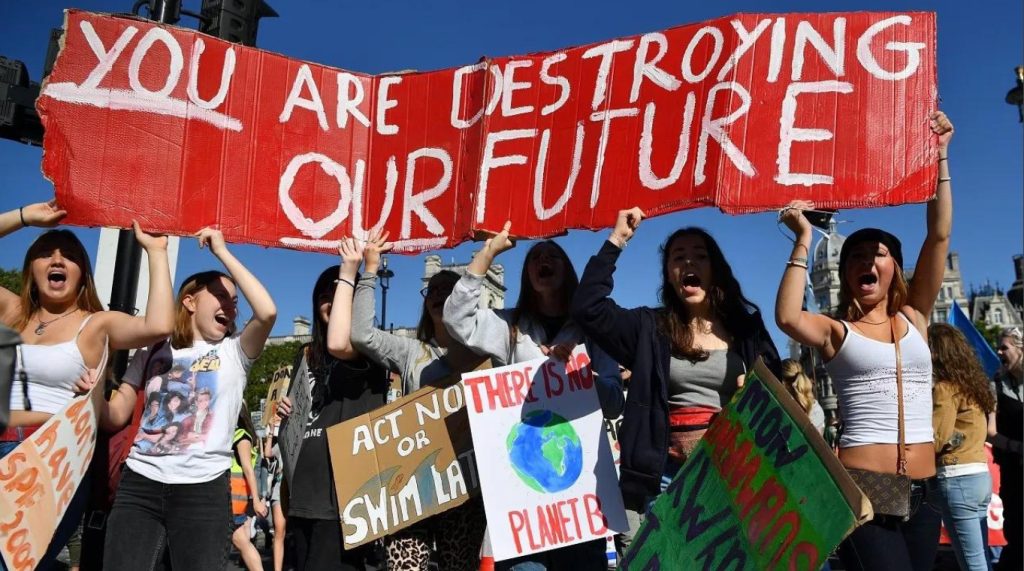
Since the dawn of the media, stories have been obtained and sought after not just for their quality, but also for their potential to be sustained and drawn out. A thrilling new movie release may inject a jolt of attention; however, this thrill is short-lived and creates a demand for the next story. Say I asked you: What movie was being screened this time in past years? Oldheads most likely wouldn’t remember the release of “Beetlejuice Beetlejuice”, a genius creation by Tim Burton, and Gen Z doesn’t have the attention span to recall Colleen Hoover’s “It Ends with us” because, despite their grand popularity, these stories do not hold space for an elongated period and come to a short end.
However, if I asked anyone watching the media during the 80s, chances are they would be able to vividly recall the Tiananmen Square massacre: the largest anti-communist Chinese protests in modern-day history. Or perhaps the name “Greta Thumburg” may ring a bell from her numerous climate protests. Even in the past week, social media is flooded with Nepal’s youth as they stormed prominent political figures, exposing the corruption within its own capitol hill. In all these rebellions, there’s a recurring theme of young people creating a lasting impact on viewers through captivating messages.
Invoke yourself in the middle of Tiananmen Square, 1989. You are amongst nearly 1 million protesters, many of whom are students, leading a pro-democracy revolt–an extremely sensitive topic amongst China’s communist realm. Following the death of chief Hu Yaobang, a lead reformist in China, Chinese citizens swelled in masses to mourn the death of such a prominent figure while simultaneously criticizing the slow pace of reform in China. Cited in the deepest parts of government, officials had been previously known for “auctioning off” control rights for enterprises and real estate and receiving much larger illicit payoffs in return. This, along with oppressing its people through limiting free speech rights and basic human rights, was a core motive in the marches.
This mass of students and workers was quickly picked up by international news, even creating the world famous image of “Tank Man” – a photo of a Chinese man halting in the face of a brigade of tanks – which quickly became a global symbol of resistance that stood the test of time. And after almost 40 years since the massacre, it lives on to be a representative motif for how the news handled a budding generation and their effort for change.
While the media has a tendency to cover particularly violent and cruel events, FFF – Fridays For Future – challenged that narrative, managing to leave a mark without direct violence. Started by arguably the most prominent environmental activist of our generation, Greta Thunberg has made herself a posing threat to any and all systems that exploit our resources. She began in 2018 with a school strike in front of the Swedish parliament, beginning efforts to morally coerce politicians into enacting pro-Environmental change. This, along with countless others, marked a timeline of motivated events that snowballed into international attention for Greta, gaining not only the coverage of the worldwide media but the support of millions worldwide. Her efforts have lifted her onto a global scale, going as far as being on the cover of the 2019 Time Magazine, and she continues to utilize intense media coverage to further her eco-friendly agenda.
Finally, in the past week, the media has reported countless stories of the destruction of government officials’ homes. Nepal has been a center of controversy over corruption in Asian countries. Most recently, a nationwide social media ban has been implemented, banning numerous platforms despite Nepal utilizing social media to the fullest extent. Immediately after, Nepalese youth took to the streets of Kathmandu, reaching as far as the parliament building, pillaging and forcing public officials to flee their respective stations. The coming weeks will be a testament to how the media will continue to fuel this fire.
It is undeniable that the young generations have a grip on not just the use of social media, but have proven to be a force of nature that has been the center of attention for media coverage. And while news stories may range from any topic, it is apparent that young generations of the time are lasting shapers of culture and time.
By Brooklyn Fischetti